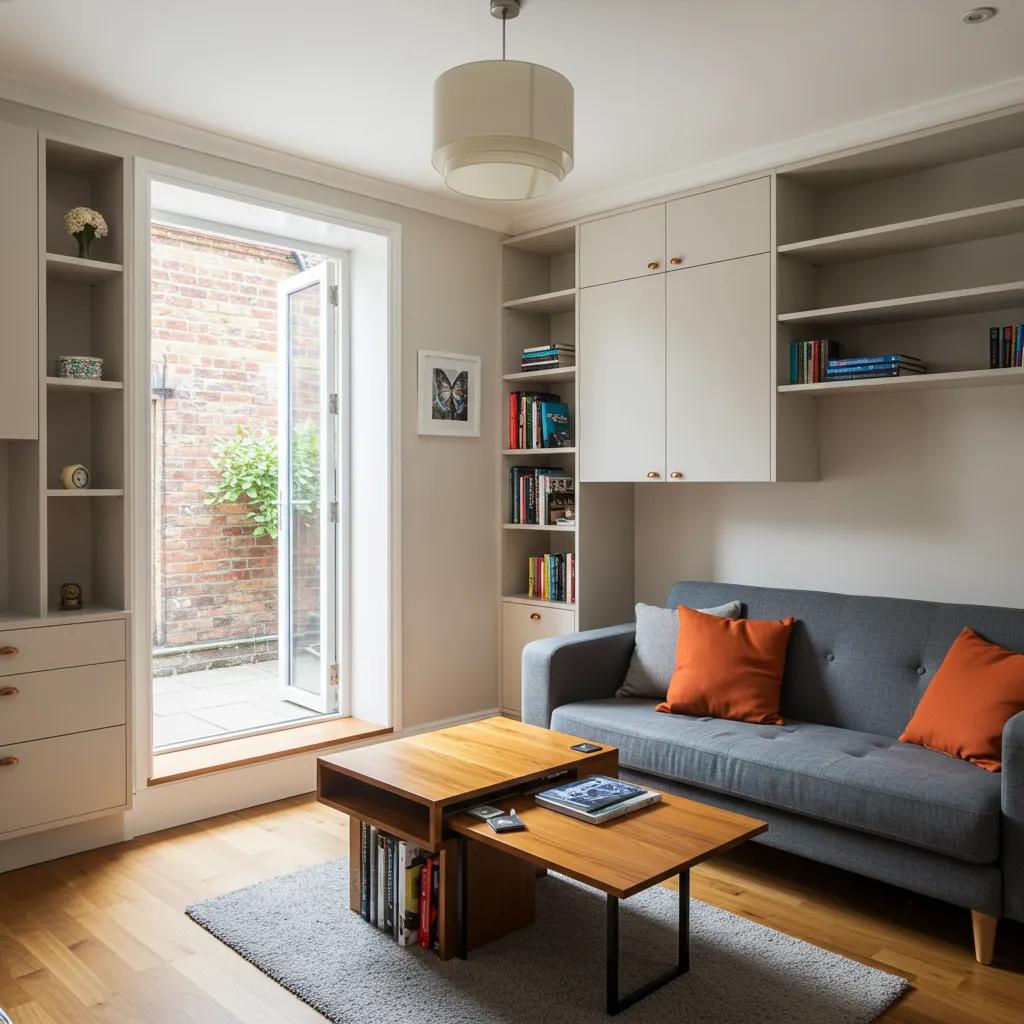Common Renovation Mistakes to Avoid: Your Essential Guide for a Stress-Free Home Renovation

Renovation mistakes to avoid can turn an exciting home transformation into a costly ordeal; understanding these pitfalls upfront ensures projects stay on budget, on schedule and on track for quality. In this guide, you’ll discover the most expensive errors—underbudgeting, hidden costs and poor planning—and learn how effective planning, contractor selection, permit compliance, design foresight and technical safeguards prevent them. You’ll also see when DIY risks demand professional intervention and how Hasl Haus local expertise on the Gold Coast, Brisbane and Northern NSW delivers stress-free premium renovations.
What Are the Most Costly Renovation Mistakes Homeowners Make?
Costly renovation mistakes arise when budgeting shortfalls, surprise expenses or flawed plans derail your project, leading to delays and overspending. Recognising these common errors—insufficient budget allowance, undiscovered costs and inadequate planning—lets homeowners adopt proactive strategies that preserve timelines and quality.
Common Costly Mistakes:
- Underestimating the total renovation budget without a contingency fund.
- Failing to account for hidden costs like structural repairs or specialised trades.
- Rushing or skipping detailed planning, resulting in design changes mid-project.
Avoiding these core errors sets a foundation for deeper budgeting controls and planning processes covered in the next section.
How Does Underestimating Your Renovation Budget Cause Project Delays?

Underestimating your renovation budget creates funding gaps when trades reach critical stages, forcing work stoppages and rushed design compromises. A secure contingency of at least 10 percent bridges unforeseen costs, ensuring uninterrupted progress from demolition through finishing touches. Hasl Haus complimentary cost-planning service helps local homeowners allocate realistic budgets and maintain project momentum.
Budgeting for Home Renovations
Underestimating renovation budgets is a common mistake, often leading to project delays and financial strain. A contingency fund of at least 10% is recommended to cover unforeseen costs and maintain project momentum. This proactive approach helps homeowners navigate unexpected expenses and keep projects on track. You can learn more about home renovations to prevent budget issues.
National Association of Home Builders, Remodeling Cost vs. Value Report (2024)
This research supports the importance of accurate budgeting and financial planning in home renovation projects, as highlighted in the article.
What Are Hidden Costs That Can Blow Your Renovation Budget?
Hidden costs—such as termite damage, asbestos removal or outdated wiring—surface once walls are opened, inflating expenses unexpectedly. Early specialist inspections identify these risks, allowing you to factor them into your budget and avoid mid-project financial shocks. Planning for hidden costs prevents overcapitalisation and preserves design integrity.
How Can Poor Planning Lead to Renovation Failures?
Poor planning means unclear goals, missing drawings or unrealistic timelines, which trigger design revisions, approval delays and dissatisfied outcomes.
A structured planning checklist defines scope, secures approvals and sequences trades for efficient workflow. Detailed planning aligns expectations and reduces the chance of scope creep.
How Can Effective Renovation Planning Prevent Common Pitfalls?
Effective renovation planning unites vision, schedule and budget into a cohesive roadmap that mitigates common pitfalls. By defining objectives, mapping timelines and establishing clear communication channels, homeowners gain control and confidence throughout the process. home renovations
Key Planning Steps:
- Establish clear renovation goals and functional requirements.
- Create a detailed planning checklist covering scope, approvals and finishes.
- Sequence trades and materials deliveries to match the project timeline.
- Schedule regular review meetings with your contractor to track progress.
- Maintain open communication channels for prompt issue resolution.
This structured approach ensures realistic schedules and prevents the timeline mismanagement discussed next.
What Are the Key Steps in Creating a Renovation Planning Checklist?
A renovation planning checklist defines every phase—from concept sketches and permit applications to material selections and final inspections—so no detail is overlooked. Including tasks, deadlines and responsibilities fosters accountability and aligns contractor performance with homeowner expectations.
How Does Mismanaging Renovation Timelines Cause Delays?
Mismanaging timelines by overlapping trades or missing critical inspections causes cascading delays and extra costs. A realistic Gantt-style schedule paired with buffer days for inspections and deliveries ensures each task flows seamlessly into the next.
Why Is Clear Communication Essential During Renovation Planning?
Clear communication cements mutual understanding of design intent, scope changes and budget adjustments. Documented instructions and progress reports minimise misunderstandings, keeping everyone aligned on quality standards and deadlines.
What Are the Biggest Mistakes When Hiring a Renovation Contractor?

Hiring the wrong contractor can introduce workmanship issues, legal disputes and safety hazards. Key errors include ignoring licensing, signing vague contracts or failing to maintain ongoing dialogue—all of which compromise reliability and results.
Common Contractor Hiring Mistakes:
- Overlooking licensing and insurance credentials.
- Accepting ambiguous contract scopes with verbal agreements.
- Neglecting regular progress meetings and written updates.
Selecting a reputable builder with clear credentials and communication protocols prevents these failures.
How Do Licensing and Insurance Impact Contractor Reliability?
Licensed and insured contractors provide homeowner protection against defects, injuries and non-compliance. Licensing verifies trade qualifications and local regulations knowledge, while insurance safeguards you from liability and project interruptions.
What Contract Details Should You Clarify Before Hiring?
A thorough contract defines scope, materials, payment schedule and dispute resolution methods. Clarifying inclusions, warranties and change-order procedures eliminates ambiguity and sets clear performance expectations.
How Can Poor Communication with Contractors Cause Renovation Problems?
Poor communication fosters misaligned visions and scope creep, resulting in rework and extra costs. Establishing weekly check-ins and written progress logs keeps homeowners informed and contractors accountable.
When Should You Avoid DIY Renovation Mistakes and Call a Professional?
DIY renovation mistakes often stem from underestimating complexity, leading to structural issues or safety hazards that require costly corrections. Knowing when to engage experts preserves both budget and wellbeing.
Importance of Professional Expertise
DIY projects can lead to costly errors and safety hazards, especially in areas like electrical work and structural modifications. Engaging qualified professionals ensures code compliance and protects homeowners from potential risks. This approach helps to mitigate the risks associated with complex renovation tasks. You can check our services for more information.
Consumer Reports, Home Improvement Guide (2023)
This source reinforces the article’s advice on when to seek professional help to avoid common DIY renovation pitfalls.
DIY Risk Factors:
- Overestimating your skill set for structural, electrical or plumbing work.
- Underappreciating safety requirements, such as proper wiring or load calculations.
- Misinterpreting code requirements, leading to non-compliant installations.
Professional involvement beyond basic painting or assembling cabinets ensures safe, code-compliant results.
What Are Common DIY Renovation Errors That Increase Costs?
Common DIY errors include uneven tile installation, improper waterproofing and inaccurate measurements, all of which necessitate professional remediation. Investing in expert trades for critical tasks avoids doubling expenses.
How Do Safety Hazards Arise from Unqualified DIY Work?
Unqualified DIY electrical or structural work risks fire, collapse or water damage. Licensed electricians and structural engineers ensure installations meet safety standards and insurance requirements.
When Is It Crucial to Hire Experts for Complex Renovation Tasks?
Engage experts for load-bearing wall modifications, major plumbing reroutes and comprehensive rewire projects. Their specialist tools, training and liability coverage protect your home’s integrity and your family’s safety.
How Do Permit and Regulation Mistakes Affect Your Renovation Project?
Permit and regulation mistakes lead to costly delays, fines and forced demolition of non-compliant work. Local councils in Gold Coast, Brisbane and Northern NSW enforce specific requirements that must be navigated carefully.
| Step | Requirement | Outcome |
|---|---|---|
| Permit Application | Submit plans to council | Legal approval to start |
| Code Compliance Review | Building code assessment | Ensures safety standards |
| Inspections | Stage-gate site visits | Verification of work |
| Final Certification | Occupancy certificate | Project completion sign-off |
These structured steps ensure compliance and risk-free progress into construction phases.
What Are the Permit Requirements for Renovations in Gold Coast, Brisbane, and Northern NSW?
Permit requirements vary by council and project scope—ranging from building works applications to environmental impact assessments. Early liaison with council planners and documented drawings streamlines approvals.
How Can Ignoring Building Codes Lead to Costly Renovation Delays?
Ignoring codes triggers stop-work orders, rework mandates and fines. Adhering to standards for structural integrity, fire safety and energy efficiency prevents enforcement actions and secures insurance coverage.
What Steps Ensure Smooth Navigation of Renovation Permits?
Engage a professional permit consultant or builder familiar with local regulations to prepare submissions, track approval timelines and coordinate necessary inspections for uninterrupted workflow.
What Are the Most Common Design Mistakes in Kitchen, Bathroom, and Home Extensions?
Design mistakes compromise usability, comfort and aesthetic appeal. In kitchens, poor layouts disrupt flow; in bathrooms, inadequate ventilation causes moisture damage; in extensions, mismatched lighting and layout reduce livability.
| Area | Design Error | Impact |
|---|---|---|
| Kitchen | Inefficient work triangle | Hinders meal preparation |
| Bathroom | Insufficient ventilation | Mould growth and odours |
| Extensions | Inadequate natural light | Dim, uninviting space |
How Do Kitchen Layout Mistakes Affect Functionality and Flow?
Kitchen layout mistakes—such as overly long work triangles or blocked clearances—create inefficiencies and safety hazards. A well-planned layout reduces unnecessary steps and optimises appliance positioning.
What Bathroom Renovation Mistakes Cause Moisture and Ventilation Problems?
Failing to install exhaust fans or selecting non-waterproof materials leads to condensation buildup, tile delamination and mould. Proper ventilation planning and moisture-resistant finishes protect longevity.
How Can Poor Planning Impact Home Extension Space and Lighting?
Extension planning that ignores sun paths or access routes results in dark, impractical additions. Strategic window placement and open-plan concepts maximise daylight and connectivity with existing spaces.
How Can Structural and Technical Errors Be Avoided During Renovations?
Structural and technical errors—from omitting steel supports to incorrect pipe gradients—compromise safety and necessitate expensive rectifications. Prioritising expert assessments and code-compliant installations ensures a solid foundation for lasting quality.
Structural & Technical Safeguards:
- Commission a structural engineer for load-bearing modifications.
- Engage licensed electricians for rewiring and safety switch installations.
- Use certified plumbers to maintain correct pipe gradients and ventilation.
What Are the Risks of Ignoring Structural Integrity in Renovations?
Ignoring structural integrity risks wall collapse, foundation shifts and long-term settlement. Engineering certification confirms that alterations support loads safely.
How Do Electrical Wiring Mistakes Compromise Renovation Safety?
Incorrect wiring methods—such as overloaded circuits or missing RCD protection—heighten fire risks and void insurance. Professional electricians apply tested wiring schematics and safety devices to safeguard occupants.
Why Is Proper Plumbing and Ventilation Essential in Renovation Projects?
Proper plumbing ensures correct drainage slopes and prevents leaks, while ventilation systems remove excess moisture and maintain air quality. Certified tradespeople guarantee installations meet health and building regulations, preserving home value and comfort. home renovations
Completing your renovation without these common mistakes protects your investment, accelerates timelines and delivers the luxury results you deserve.
Hasl Haus premium custom renovation services combine meticulous planning, licensed trades and local permit expertise to guide Gold Coast, Brisbane and Northern NSW homeowners to a stress-free success.
Ready to transform your home with confidence? Contact Hasl Haus today for a tailored consultation and discover how professional oversight prevents costly errors.
Frequently Asked Questions
What should I consider when choosing a renovation contractor?
When selecting a renovation contractor, it’s crucial to verify their licensing and insurance credentials to ensure they are qualified and compliant with local regulations. Additionally, review their portfolio and client testimonials to gauge their experience and reliability. Clear communication is essential; ensure that you discuss your project scope, timelines, and budget upfront. A well-defined contract that outlines all details, including payment schedules and warranties, will help prevent misunderstandings and ensure accountability throughout the renovation process.
How can I effectively manage my renovation timeline?
To manage your renovation timeline effectively, start by creating a detailed project schedule that includes all phases of the renovation, from planning to completion. Use a Gantt chart to visualise task dependencies and allocate buffer days for inspections and material deliveries. Regularly review progress with your contractor to address any delays promptly. Open communication is key; ensure that all parties are aware of timelines and any potential changes to avoid cascading delays that can disrupt the entire project.
What are the benefits of hiring a professional for complex renovations?
Hiring a professional for complex renovations offers numerous benefits, including expertise in navigating building codes and regulations, which can prevent costly mistakes and delays. Professionals bring specialised knowledge in areas such as structural engineering, plumbing, and electrical work, ensuring that all installations are safe and compliant. Additionally, their experience allows for better project management, helping to keep timelines and budgets on track. Ultimately, engaging professionals can save you time, reduce stress, and enhance the quality of your renovation.
How can I avoid design mistakes in my renovation project?
To avoid design mistakes in your renovation, start by clearly defining your goals and functional requirements. Engage a qualified designer or architect who can provide insights into efficient layouts and aesthetic considerations. Conduct thorough research on materials and finishes to ensure they meet your needs. Additionally, create a detailed design plan that includes all elements, such as lighting and ventilation, to prevent issues during construction. Regularly review the design with your contractor to ensure alignment and make adjustments as needed.
What are the consequences of not obtaining the necessary permits for renovations?
Failing to obtain the necessary permits for renovations can lead to significant consequences, including fines, stop-work orders, and the potential need to demolish non-compliant work. Local councils enforce strict regulations to ensure safety and compliance with building codes. Without proper permits, you may also face challenges when selling your home, as buyers often require proof of compliance. To avoid these issues, consult with local authorities or a professional familiar with the permitting process before starting your renovation project.
How can I ensure my renovation stays within budget?
To keep your renovation within budget, start by creating a comprehensive budget that includes all anticipated costs, such as materials, labour, and a contingency fund for unexpected expenses. Regularly track your spending against this budget and adjust as necessary. Communicate openly with your contractor about any changes that may impact costs. Additionally, consider prioritising essential renovations over cosmetic upgrades to manage expenses effectively. By maintaining a clear financial plan and monitoring progress, you can minimise the risk of overspending.
What are the signs that I should hire a professional for my DIY renovation?
Signs that you should hire a professional for your DIY renovation include encountering complex tasks beyond your skill level, such as structural changes, electrical work, or plumbing. If you find yourself overwhelmed by the project scope or facing safety concerns, it’s wise to seek expert help. Additionally, if you notice that your DIY efforts are leading to costly mistakes or delays, hiring a professional can save you time and money in the long run. Ultimately, prioritising safety and quality should guide your decision.



